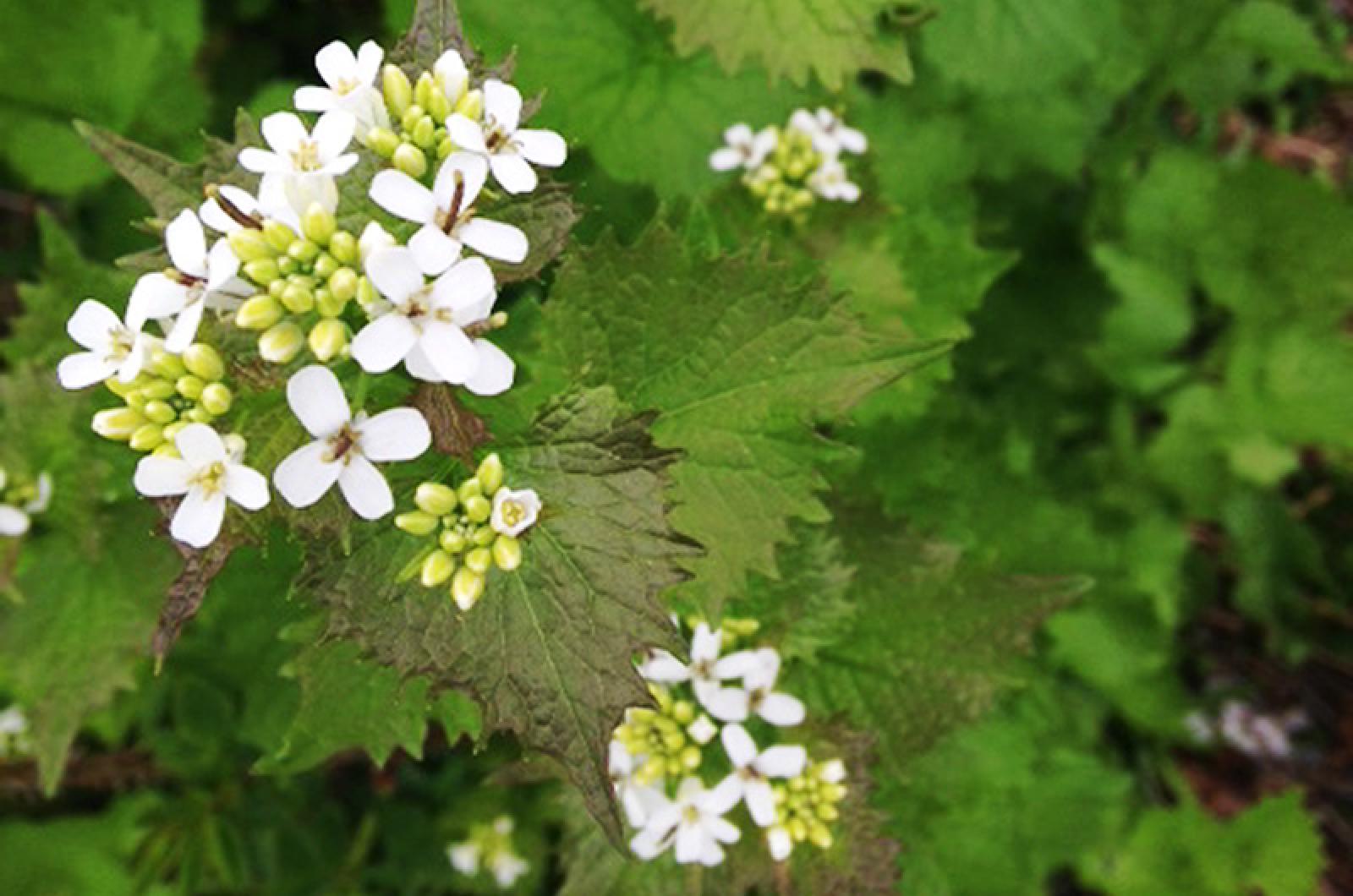American journalist and humorist Arthur (Bugs) Baer had a great nickname and a solid opinion on a strong seasoning. He explained: “There is no such thing as a little garlic.”
While he wasn’t likely speaking of garlic mustard, the dastardly invasive plant determined to cover the country, the same sentiment applies. It was only five years ago that I wrote of this flavorful flower, but much has changed in its prevalence and dominance.
Back then I rued its presence, but was encouraged by its limited Island occurrences. Too much has changed since then.
This plant has spread in the locations where it existed then, and expanded its range and presence to new sites. If you are lucky enough to not have it in your yard and in your life, you can see it in many places on the Island, including both public and private lands.
Currently blooming, look for its head of small, white four-petalled flowers. The leaves of garlic mustard are heart-shaped with toothed edges. Very fragrant with garlicky-scented leaves and a root that smells like horseradish, it is no surprise that garlic mustard tastes as good as it smells.
There is a downside to this plant, which is not native to North America. It is invasive, out-competing and even harming other native species and has no known value to wildlife.
Here, humans are the only creatures consuming its tasty leaves, stems, flowers and roots. Recipes abound and include pesto from the leaves, pickles from the roots, and as additions to soups and sauces. The seeds are edible also, and using all parts of the plant is among the many wonderful ways to work on wiping it out. Its aliases, including garlic root, sauce alone, poor man’s mustard and hedge garlic, suggest its many culinary options.
Its fabulous flavoring and medicinal might is why it ended up on our shores in the first place. A native of Europe, garlic mustard was brought to this country with settlers that enjoyed its culinary and curative properties. It escaped quickly, and was found growing wild on Long Island as early as 1868.
Garlic mustard is high in vitamins A and C and known as a remedy in the treatment of everything from gangrene to ulcers. It is also one of the oldest known flavors, found in archeological remains from the Baltic region from 4100 to 3750 BCE.
However, it is not delectable and healthy for everyone. Consider that it can be toxic to some creatures. It is notable for being poisonous to some caterpillars, including cabbage whites and their relatives in the Pieris genus. Even deer aren’t interested, preferring to nibble the neighboring native species, thereby (unfortunately) helping garlic mustard thrive.
Garlic mustard is allelopathic, meaning that it produces biochemicals in the soil that prohibit the growth of neighboring and often native plant species. And as an understory plant, it can survive without a lot of sun. And in a final blow to those trying to eradicate it, each plant can produce thousands of seeds to assure its expansion.
While I can hope that five more years from now, I won’t be writing about garlic mustard’s continued expansion, I am afraid that is what the future holds for this resilient and fertile species. If it does take over, it might become, as Chef Louis Diat suggested, as omnipresent as one of the primary elements, observing: “There are five elements: earth, air, fire, water and garlic.”
Suzan Bellincampi is director of the Felix Neck Wildlife Sanctuary in Edgartown, and author of Martha’s Vineyard: A Field Guide to Island Nature.




Comments
Comment policy »